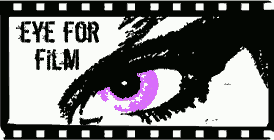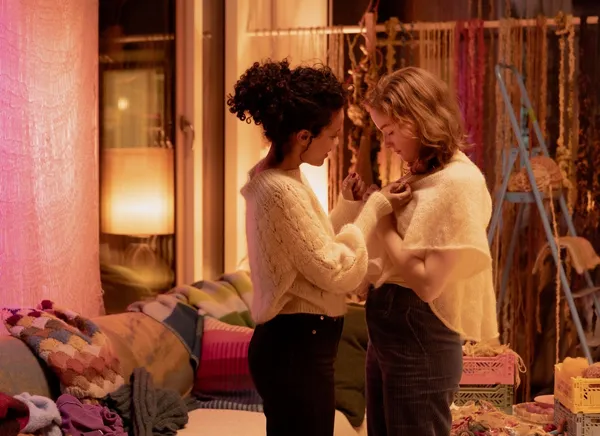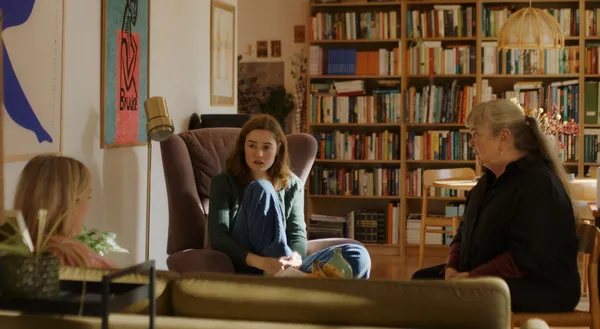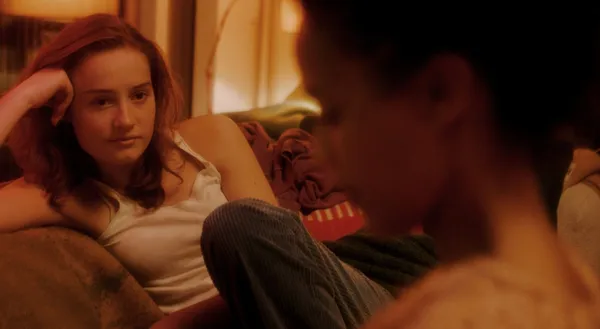Dag Johan Haugerud’s Sex Dreams Love trilogy is an ambitious work that explores the multifaceted nature of desire in the modern world. The three films are stand-alone works, although there is a common character, Bjorn (Lars Jacob Holm), who appears in all three and whose character comes more to the fore in the third part, Love, which considers different attitudes to sex through the prism of a woman considering casual liaisons. Sex, meanwhile, focuses on a man whose life is shaken up by an unexpected sexual encounter, while Dreams zones in on a teenager’s sexual memoir which may or may not be a factual document of her relationship with her teacher.
Love, which premiered at Venice last year, and Dreams, which won the Golden Bear in Berlin, are both screening at Glasgow Film Festival, while all three will be released in the UK later in the year. We caught up with the writer/director to talk about the trilogy as a whole but in the first part of our conversation, we specifically turned our attention to Dreams.
 |
| Dag Johan Haugerud with his Golden Bear Photo: © Richard Hübner/Berlinale 2025 |
Technically the second in the trilogy, Dreams premiered last on the international stage. It has a different, more ‘fictionalised’ feeling to it than the other two films, which suits well with the ambivalent subject matter, since we are asked to decide whether teenager Johanne (Ella Øverbye) is imagining sexual encounters with her teacher Johanna (Selome Emnetu) or simply spring from her imagination. This is the question that is raised in the minds of her mother (Ane Dahl Torp) and gran (Anne Marit Jacobsen), opening the door for all three women to talk about aspects of and attitudes towards sexuality.
Haugerud says that the fuzzier, more intimate feel of Dreams was deliberate.
He explains: “The other two have this kind of distant view of the people but in Dreams it’s a much more subjective presentation of what Johanne is feeling. We are much closer to her than we are in the other films and it’s not that comfortable for me to go that close because I don't really like it. So that was the film that was most challenging for me camera-wise. It’s not my taste really.”
One of the key elements of the intimacy of the shooting is the wool that is used both in the elaborate knitwear that is worn by teacher Johanna and in decorations within her apartment. Haugerud is pleased that the film has a tactile quality.
“You never know if you are going to succeed in that but that's why we're working so much with wool and these textures that are tactile in a way,” he says. “We worked with some textile artists. It’s very apparent what the wool is doing to us, the feeling of wool - carrying it on the skin and seeing it as well.”
The wool in Dreams is also used to shift the mood later, and to add to the enigmatic nature of what we have heard, so that we are not sure how true what we have seen was or to what degree it was created in Johanne’s mind.
Haugerud says: “In the first part of the film in Johanna’s apartment, everything is wool, then in the last part of the film when she has got rid of it, there are some elements there as well but they are all synthetic. So we got rid of all wool and brought in plastics because there were textile artists that just worked in plastic.”
There’s a sort of symmetry that’s evoked between the teenager and her teacher since their names are so similar. Although, in retrospect, Haugerud notes it “wasn’t a very good idea.” because it made it tricky on the set.
Speaking about the motivation of the names, he adds: “It's so much about Johanna feeling that there is a connection between them, and that's also in the name in a way. She feels that immediately that she’s called Johanna as well. But then there’s a guy who sits beside her in the classroom and he’s called Johannes, so that could be a connection.
One of the distinctive elements of the film is its use of voice over. We are introduced to the story by Johanna and the first part plays out purely from her perspective. That obviously presented challenges of marrying up what was being said with the action both onset and in the edit.
Haugerud says: “When it comes to voiceover, first we recorded it just to time it and then we recorded it while we were shooting - in the scenes she read the voice over - and then we made three more recordings, I think, afterwards. What you hear in the film is a mix of all that. It’s a lot about timing.
“But the voice over was also a matter of concern from the very beginning because all the producers thought it was impossible to have a film with that much voice over. The interesting thing to me was that it was never a problem and the film was released. No one mentioned that to me later on.”
He notes that in real life conversations often do end in conflict or with someone stopping them short but he’s interested in what happens next.
That interest in dialogue, means the Norwegian filmmaker’s characters talk to one another about issues and take an interest in one another's opinions, with the writer/director also capturing the way that sometimes finding the right words can be difficult.
He adds: “I really work a lot with that when I'm writing because I think that when you are speaking, you are thinking and speaking at the same time and you don't always say what you mean to say.
“That's quite a hard exercise. That’s what I’m doing now, I’m thinking and trying to pronounce what I’m thinking. There’s no trick, it’s just trying to get a sense of it and I read it out loud to myself to see how it comes across. But I have that in mind all the time, that what they are saying, they are struggling to get right.”
Dreams screens at Glasgow Film Festival on Saturday and Sunday. It will be released in the UK by Modern Films later in the year. Look out for the second part of our conversation about the trilogy then
























